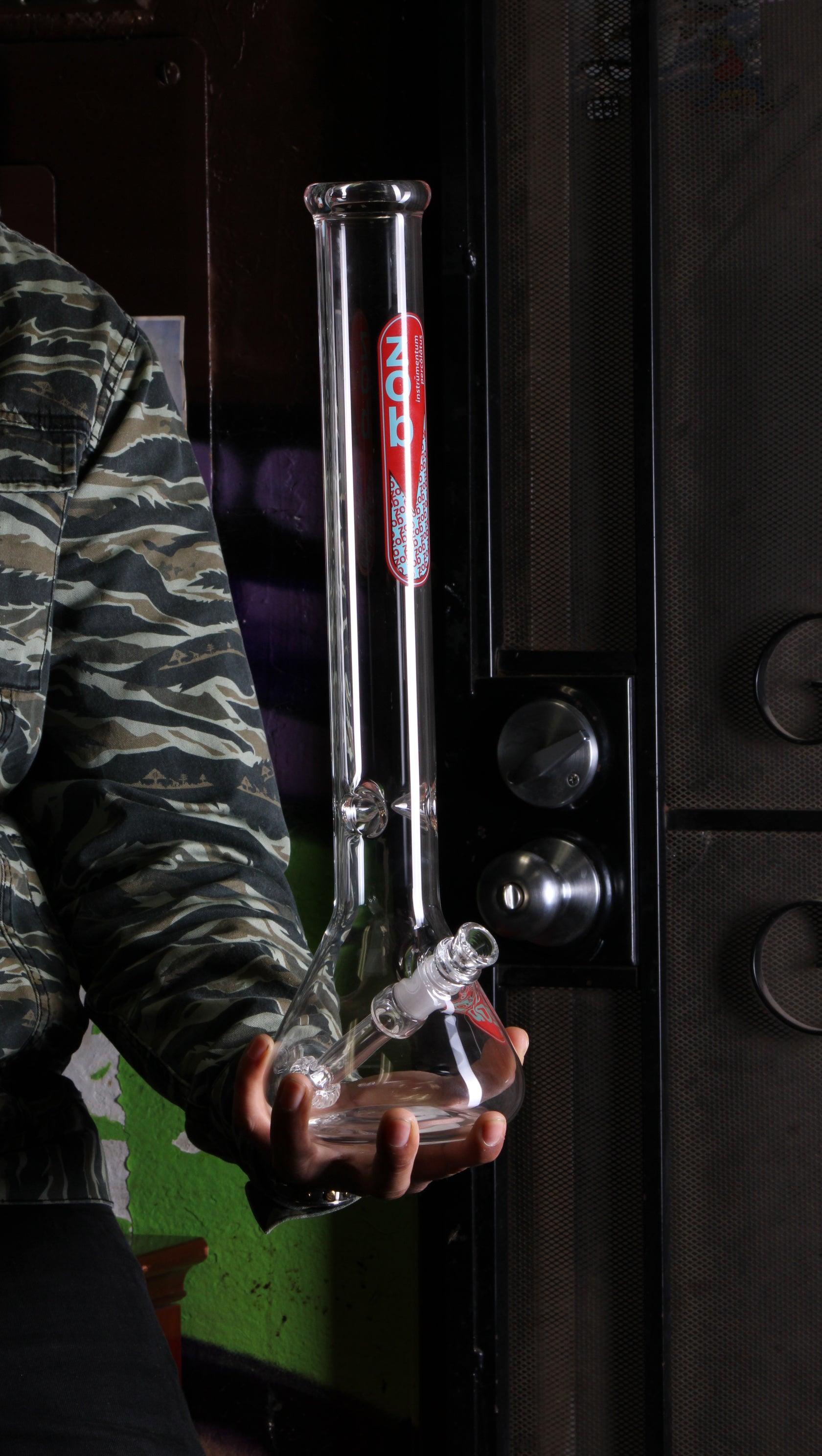
Bongs, The Coolest Way To Smoke!
What Is A Bong (And How To Use One)
There are several ways to smoke and enjoy cannabis. One of the most popular is by using a bong.
A bong is also known as a water pipe. It’s used to enhance the experience and reduce the temperature of the smoke.
Bongs come in all different shapes and sizes and can be made from a host of materials, such as glass, metal, bamboo and more.
But no matter what they may be made from, or look like, they all pretty much work in the same fashion. Everything else is left to the designer.
The remainder of this guide will explain the history of the bong, its anatomy, how it’s used and the benefits of using it.
The History Of The Bong
The first recorded use of a bong dates back more than 2,000 years ago. Excavations in Russia have found gold bongs used by the Iranian-Euastrion Scythe tribe.
Further bongs have been discovered across the world, including other Asian territories and in Africa. Instead of gold, these bongs were created with animal horns and ceramic materials, dating back to around 1100 AD.
It’s reported that ancient Chinese dynasties were the first to use water in a bong. Whether this is true or not remains to be seen, but what we do know is that Chinese emperors were buried along with their bongs.
The term “bong” itself originates from the Thai word “baung”, referring to the popular bamboo tubes used in the area and across Central Asia.
How A Bong Is Made
There are several key components to a bong:
- The bowl
- The carburetor hole
- The downstem
- The base
- The tube
The Bowl
This is where the ingredients are added before being set alight. Depending on the design, the bowl may be able to be removed and swapped for another.
The Carburetor
Also known as the carb hole or the shot hole, the carburetor clears smoke from the chamber. Some bongs have the carburetor directly built-in, while others must remove the bowl.
The Downstem
This is the small tube that brings the smoke from the bowl to the base. The smoke can then blend with the water.
The Base
This lies at the bottom of the bong. The base can be designed in many styles, but most commonly come in the shape of a bubble.
The Tube
The tube starts at the chamber and ends at the mouthpiece. It’s responsible for moving the smoke through the bong to the mouth once it’s been filtered.
Bong Materials
Bongs are available in a range of materials, each with its own benefits and drawbacks.
Glass Bongs
Glass is the most popular bong material. It has no impact on the flavor and ensures every taste is clean and pure.
Because it’s transparent, any unwanted residue within the bong can be spotted instantly, making it easy to clean.
However, glass bongs are expensive. Plus, they are prone to smashing.
Acrylic Bongs
Acrylic bongs are also popular. They are very durable, so there’s no need to worry about them breaking as much compared to glass bongs.
Acrylic is among the cheapest materials too, so even if the bong does break, it won’t cost much to replace it.
However, acrylic bongs will impact on the taste and overall experience.
Ceramic Bongs
Ceramic bongs look great on the mantelpiece. They are available in a wide range of designs, so they double as an interesting art piece - perfect to use for a special occasion.
On the other hand, ceramic bongs are quite heavy, so they’re not ideal for use in a group environment. They are fragile too, so travelling with them can be quite the challenge.
Adding to that, they can also be on the expensive side, but still cheaper compared to glass.
Bamboo Bongs
Bamboo bongs are tributes to the traditional way of smoking. The material is very durable and cheap to obtain, so the prices of these bongs are low.
With enough care, they can last a lifetime.
The main downside to bamboo bongs is that they’re tough to clean.
Metal Bongs
Metal isn’t a popular material for bongs, but it’s still an option.
